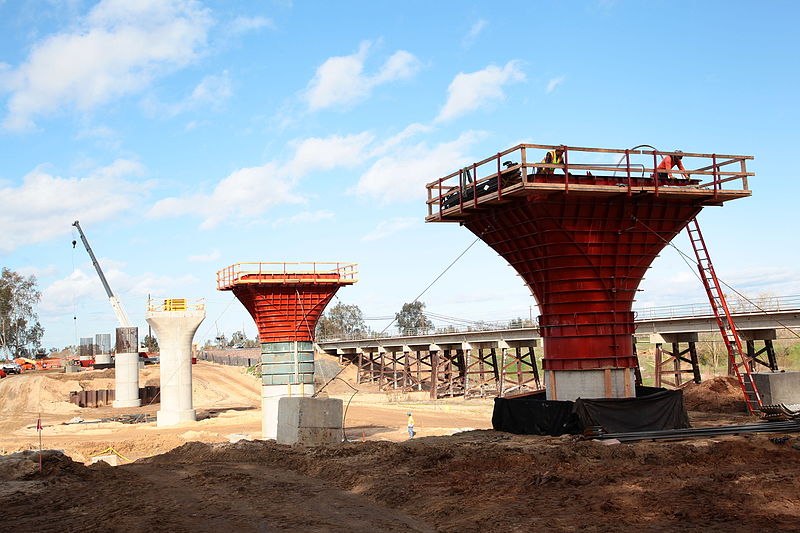In Reason, Scott Shackford reports on the sudden acceptance that California’s high speed train dream is dead:

Construction of the Fresno River Viaduct in January 2016. The bridge was the first permanent structure constructed as part of California High-Speed Rail. The BNSF Railway bridge is visible in the background.
Photo by the California High-Speed Rail Authority via Wikimedia Commons.
California’s wasteful, expensive, and likely doomed-to-fail statewide bullet train project is getting killed. Today, Democratic Gov. Gavin Newsom said he’s abandoning the plan as “too costly.”
Newsom made the announcement in his State of the State address this morning. As the Associated Press reports:
Newsom said Tuesday in his State of the State address it “would cost too much and take too long” to build the line long championed by his predecessor, Jerry Brown. Latest estimates pin the cost at $77 billion and completion in 2033.
Newsom says he wants to continue construction of the high-speed link from Merced to Bakersfield in California’s Central Valley. He says building the line could bring economic transformation to the agricultural region.
And he says abandoning that portion of the project would require the state to return $3.5 billion in federal dollars.
Newsom also is replacing Brown’s head of the board that oversee the project and is pledging to hold the project’s contractors more accountable for cost overruns.
Newsom actually turned against the bullet train project years ago but then went quiet about it when he began his plans to run for governor. He declined to discuss what he saw as the train’s future on the campaign trail, but after he was elected he suggested some sort of cutback was coming, possibly eliminating the bottom half of the project, making it a train from San Francisco to the Central Valley of California.
Now it looks like he’s scaling even that back. Californians are just going to be left with a train in the middle of some of the more rural parts of the state because the Newsom administration doesn’t want to have to repay the federal funding.
Whatever may come next, this is happy news for most California citizens. Voters approved a ballot initiative in 2008 that set aside a $10 billion bond to begin the project of building a high-speed rail line from Los Angeles to San Francisco with the promise that more funding would come through from the feds or from private sources, that the train would not require subsidies to operate, and that it would help fight climate change.



